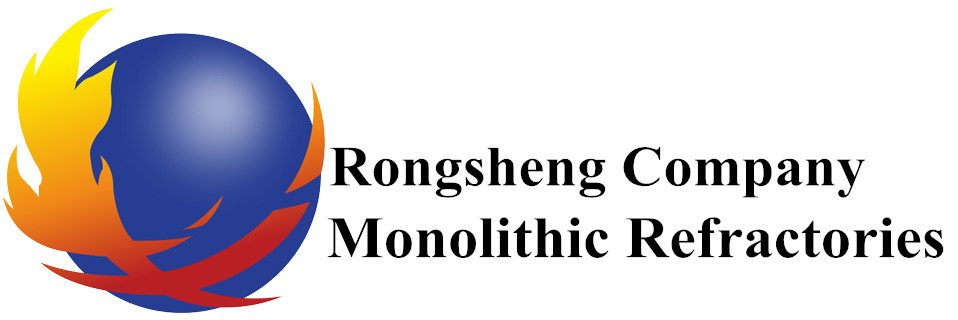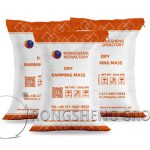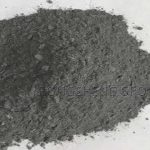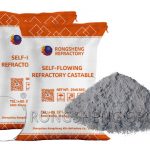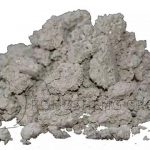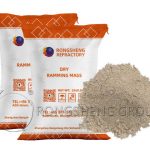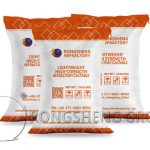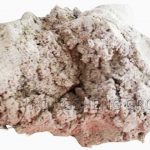Dry vibrating materials are composed of refractory aggregates, powders, sintering agents and admixtures without adding water or liquid binders. Only with the help of vibration, a dense and uniform monolithic amorphous refractory raw material can be formed through sliding between particles and fine powders.
The Process Principle of Dry Vibrating Material
The process principle of dry vibrating material. Add various binders, modifiers and sintering agents. It ensures that there are chemical reactions between materials at various temperatures to form high-temperature phase products and combine with ceramics to gain strength.
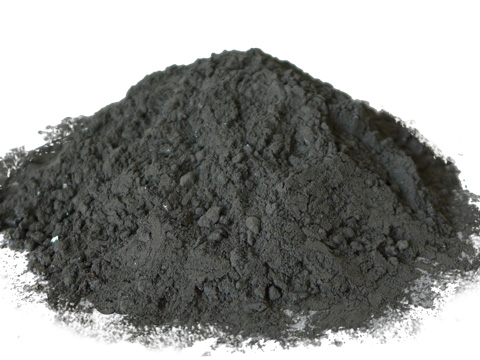
Dry vibrating materials should carefully prepare the particle gradation of materials. The critical particle size is about 5mm. The proportion of coarse, medium and fine aggregate is (20%~30%): (30%~40%): (30%~40%), and it is an easy-flowing material without edges. The ratio of aggregate to powder is approximately 65:35. In this way, the particles move quickly under the action of small vibration force to fill the gaps and achieve a higher packing density.
Characteristics of dry vibrating materials. Dry construction relies on heating to form a working layer with a certain strength, which can prevent the intrusion of metal melt. The non-working layer is not sintered, which reduces the stress caused by expansion and contraction, prevents the extension and spread of cracks in the working layer, and facilitates disassembly and removal of the lining. Long service life.
Classification of Dry Vibrating Materials
Dry vibrating materials are classified according to the type of material and the location where it is used. According to the material type, it is divided into dry vibrating materials such as silicon, corundum, magnesium, magnesia-aluminum, magnesia-aluminum spinel, magnesia-calcium, magnesia-carbon. According to the use part, it is divided into dry vibrating materials such as tundish, electric furnace bottom and slope, power frequency induction electric furnace melting trench and tapping trench.
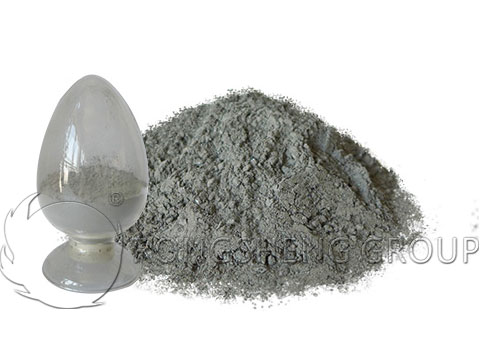
Construction of Dry Vibrating Materials
The construction of dry vibrating materials is divided into two types: direct vibration and indirect vibration. Take tundish as an example to illustrate.
- The direct vibration method uses a flat vibrator to vibrate while laying the material, and the construction is done layer by layer. After the construction of the bottom of the package is completed, side formwork is set up to construct the package wall. After each layer of construction, the surface layer should be raked and new dry material added to prevent delamination.
- The indirect vibration method is to install the vibrator on the formwork, and its vibration force is transmitted to the dry materials through the formwork to obtain a dense construction body. The installation position and number of vibrators are subject to the density of the lining material.
-
- First, clean the surface of the permanent lining, install the impact plate and seat bricks, and pound the surrounding area tightly with dry materials. Then pour the dry material into the bottom of the bag, beat it flat with a shovel and ensure the thickness of the bottom of the bag, leaving room for compression during vibration.
- Next install the tire mold. The distance between the tire mold and the surrounding permanent lining is consistent so that it reaches the required thickness of the working lining.
- Third, pour the dry material until it reaches the upper edge of the tire mold, start the vibrator and vibrate for 4-6 minutes, then add more material and vibrate until the dry material reaches the edge of the tire mold.
- Finally clean up the scene. Light the baking burner on the tire mold and bake it over low heat. The baking temperature is 180-270℃ and the baking time is about 2 hours. The dry material is hardened to obtain a certain strength, and then air-cooled to reduce the temperature of the tire mold to below 100°C for demoulding. Check the condition of the lining body and repair it promptly if there are any defects. Generally speaking, both methods are used in the construction of dry vibrating materials. In order to achieve the maximum density of the lining body and improve its service life.
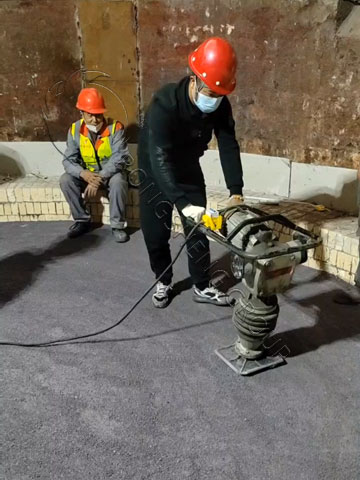
What is the Difference between Dry Vibrating Materials and Ramming Materials?
Dry vibrating materials and ramming materials are developed under the basic theory of castable materials. Its key technology lies in the self-reaction and self-sintering products at high temperatures, which must be high-temperature phase substances. Its particle gradation and binders are also very important. This castable was originally introduced with the introduction of electric furnaces.
Dry vibrating material is a dry refractory mixture without adding any liquid. The material that is vibrated to obtain a dense construction body and can be used directly without curing and baking is called dry ramming material. The process principle is: adding various load sintering agents to ensure chemical reactions between materials at high or low temperatures, and obtaining high-temperature phase products and ceramic combinations. Carefully configure the particle gradation of the material. It is guaranteed that under the action of small vibration force, the particles can move quickly and fill various gaps without any remaining or insufficient materials at all levels. As a result, higher packing density can be obtained.
Dry vibrating materials are distinguished according to material grade and use part. According to the material type, it is divided into dry vibrating materials such as siliceous, corundum, magnesia, magnesia-calcium, magnesia-aluminum, magnesia-aluminum spinel. According to the use part, it can be divided into electric furnace bottom dry vibrating material, medium frequency furnace melting trench dry vibrating material and tundish working lining dry vibrating material.
Finally, I would like to add that after the construction of dry vibrating materials and ramming materials is completed, a layer of thin steel plate needs to be laid on them. This is to prevent the surface from being damaged when loading scrap steel or mixing molten iron. When producing the first few furnaces of steel, you should always observe the surface of the working layer at the bottom of the furnace. If there is a pit, it should be repaired in time with the same material.
Rongsheng Refractory Company provides monolithic refractory materials for high-temperature furnaces. Contact us for free quotes and refractory lining solutions.
